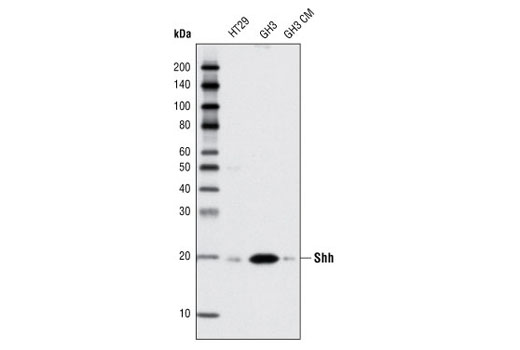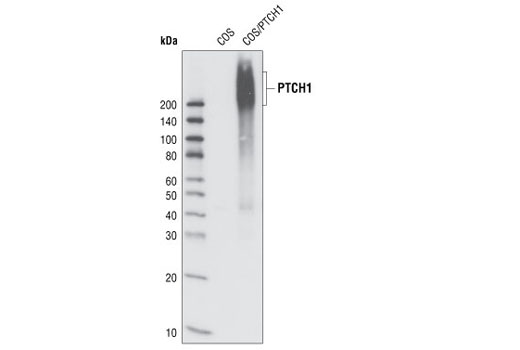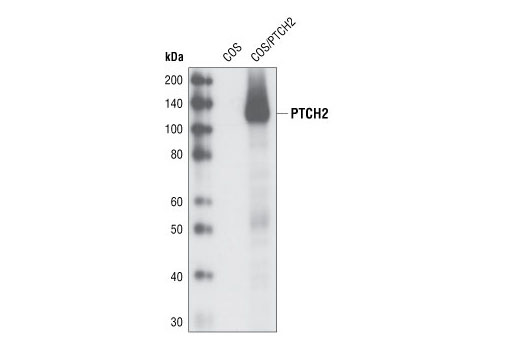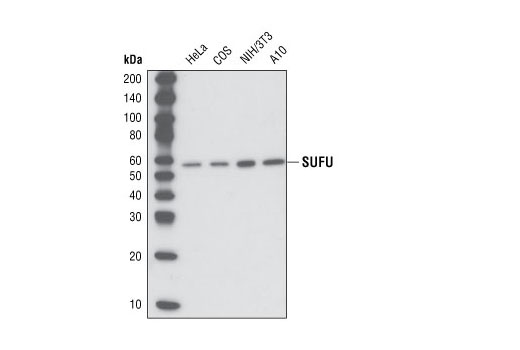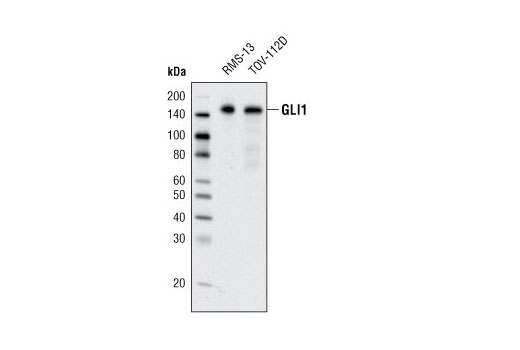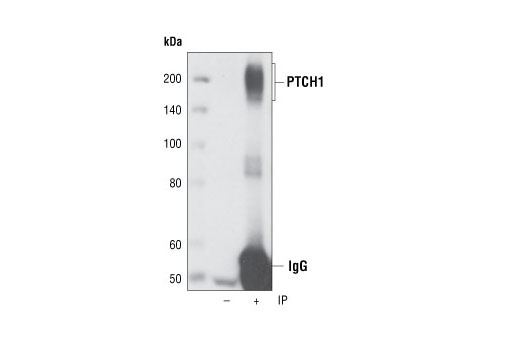| Product Includes | Product # | Quantity | Mol. Wt | Isotype/Source |
|---|---|---|---|---|
| Shh (C9C5) Rabbit mAb | 2207 | 20 µl | 19, (45 precursor) kDa | Rabbit IgG |
| PTCH1 (C53A3) Rabbit mAb | 2468 | 20 µl | 180-210 kDa | Rabbit IgG |
| PTCH2 (G1191) Antibody | 2470 | 20 µl | 130 kDa | Rabbit |
| SUFU (C54G2) Rabbit mAb | 2520 | 20 µl | 54 kDa | Rabbit IgG |
| GLI1 (C68H3) Rabbit mAb | 3538 | 20 µl | 160 kDa | Rabbit IgG |
| Anti-rabbit IgG, HRP-linked Antibody | 7074 | 100 µl | Goat |
Please visit cellsignal.com for individual component applications, species cross-reactivity, dilutions, protocols, and additional product information.
Description
This sampler kit provides an economical means of evaluating key members of the Hedgehog signaling pathway. The kit contains enough primary and secondary antibody to perform two western miniblot experiments.
Storage
Background
The evolutionarily conserved Hedgehog (Hh) signaling pathway plays critical roles in the regulation of patterning, growth, and cell migration during embryonic development and adult tissue homeostasis. Aberrant Hh signaling activity can be associated with numerous birth defects and uncontrolled Hh pathway activation is linked to the development of several types of cancers (1-2). The three identified vertebrate Hh genes are Sonic (Shh), Indian (Ihh), and Desert (Dhh), all of which have distinct as well as overlapping roles (3-5). Patched1 and 2 (PTCH1 and PTCH2) are twelve-pass transmembrane proteins that function as the Hh receptors (6-9). The general organization of the Hh pathway consists of a series of repressive interactions. In the absence of Hh proteins (off-state), PTCH suppresses the otherwise constitutively active signaling receptor Smoothened (Smo) (1,2). In the off-state, SUFU (Suppressor of Fused), originally identified in Drosophila as a suppressor of the Fused (Fu) kinase (10), suppresses Hh signaling by regulating the localization of the transcription factors Gli and Ci (11,12). In Drosophila, SUFU may also positively regulate Hh signaling depending on SUFU protein levels and Hh signal intensity (13).
- Ingham, P.W. and McMahon, A.P. (2001) Genes Dev 15, 3059-87.
- McMahon, A.P. et al. (2003) Curr Top Dev Biol 53, 1-114.
- Zhang, X.M. et al. (2001) Cell 106, 781-92.
- Adolphe, C. et al. (2004) Development 131, 5009-19.
- Pathi, S. et al. (2001) Mech Dev 106, 107-17.
- Stone, D.M. et al. (1996) Nature 384, 129-34.
- Chen, Y. and Struhl, G. (1996) Cell 87, 553-63.
- Motoyama, J. et al. (1998) Nat Genet 18, 104-6.
- Smyth, I. et al. (1999) Hum Mol Genet 8, 291-7.
- Pham, A. et al. (1995) Genetics 140, 587-98.
- Barnfield, P.C. et al. (2005) Differentiation 73, 397-405.
- Méthot, N. and Basler, K. (2000) Development 127, 4001-10.
- Dussillol-Godar, F. et al. (2006) Dev Biol 291, 53-66.
Background References
Trademarks and Patents
使用に関する制限
法的な権限を与えられたCSTの担当者が署名した書面によって別途明示的に合意された場合を除き、 CST、その関連会社または代理店が提供する製品には以下の条件が適用されます。お客様が定める条件でここに定められた条件に含まれるものを超えるもの、 または、ここに定められた条件と異なるものは、法的な権限を与えられたCSTの担当者が別途書面にて受諾した場合を除き、拒絶され、 いかなる効力も効果も有しません。
研究専用 (For Research Use Only) またはこれに類似する表示がされた製品は、 いかなる目的についても FDA または外国もしくは国内のその他の規制機関により承認、認可または許可を受けていません。 お客様は製品を診断もしくは治療目的で使用してはならず、また、製品に表示された内容に違反する方法で使用してはなりません。 CST が販売または使用許諾する製品は、エンドユーザーであるお客様に対し、使途を研究および開発のみに限定して提供されるものです。 診断、予防もしくは治療目的で製品を使用することまたは製品を再販売 (単独であるか他の製品等の一部であるかを問いません) もしくはその他の商業的利用の目的で購入することについては、CST から別途許諾を得る必要があります。 お客様は以下の事項を遵守しなければなりません。(a) CST の製品 (単独であるか他の資材と一緒であるかを問いません) を販売、使用許諾、貸与、寄付もしくはその他の態様で第三者に譲渡したり使用させたりしてはなりません。また、商用の製品を製造するために CST の製品を使用してはなりません。(b) 複製、改変、リバースエンジニアリング、逆コンパイル、 分解または他の方法により製品の構造または技術を解明しようとしてはなりません。また、 CST の製品またはサービスと競合する製品またはサービスを開発する目的で CST の製品を使用してはなりません。(c) CST の製品の商標、商号、ロゴ、特許または著作権に関する通知または表示を除去したり改変したりしてはなりません。(d) CST の製品をCST 製品販売条件(CST’s Product Terms of Sale) および該当する書面のみに従って使用しなければなりません。(e) CST の製品に関連してお客様が使用する第三者の製品またはサービスに関する使用許諾条件、 サービス提供条件またはこれに類する合意事項を遵守しなければなりません。
